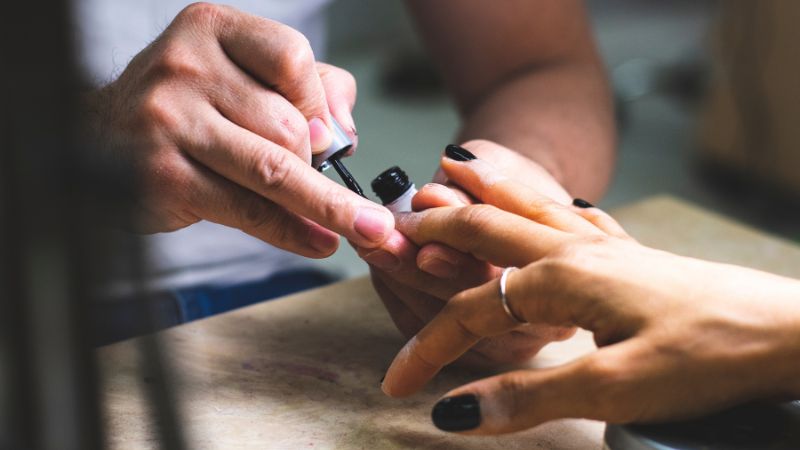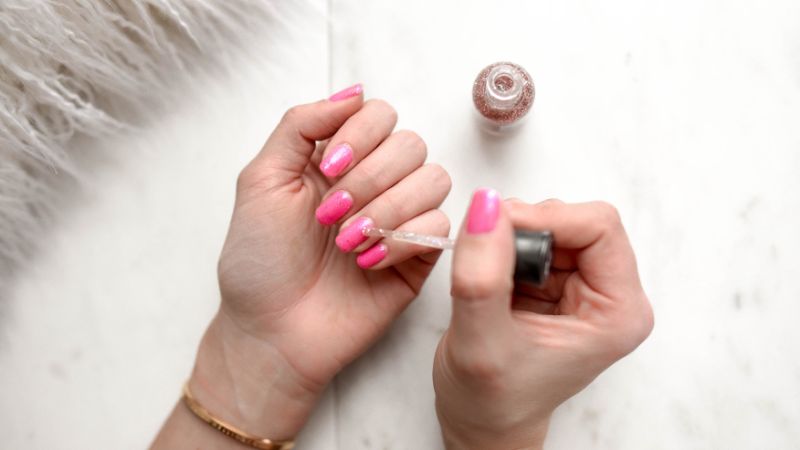Nail painting is a beloved hobby for many women. However, few are aware of the potential health risks posed by the seemingly harmless nail polishes. This article will shed light on these toxic ingredients, empowering you to make informed choices when selecting and using nail polish.
1 Color Durability Ingredients in Nail Polish
Triphenyl Phosphate
Nail polish, despite its innocent appearance, can pose health risks due to the presence of Triphenyl phosphate (TPHP), a substitute for phthalate used to enhance color durability, adhesion, and flexibility. However, TPHP has a pungent odor and can cause dizziness and nausea when inhaled directly, along with potential long-term neurological impacts.
Recent studies reveal that TPHP can penetrate the body within 10-14 hours of nail polish application, affecting reproductive capabilities in animals and posing risks of weight gain, obesity, and hormonal imbalances in humans.
Toluene
Toluene, a commonly used solvent in nail polishes, contributes to enhanced color durability, longevity, and shine. Nonetheless, it poses health risks by impacting the central nervous system, brain, liver, and kidneys when inhaled.
More severely, toluene can induce reproductive issues in women, particularly endangering the fetus during pregnancy.
 Color Durability Ingredients in Nail Polish
Color Durability Ingredients in Nail Polish
2 Nail Hardening Ingredients
Formaldehyde
Formaldehyde is a prevalent chemical in the industry, commonly used in the manufacture of adhesives, plastics, and paints. It is also found in gel nail polishes, serving as a hardening and disinfecting agent. However, formaldehyde poses significant health risks, especially with prolonged exposure.
Some of the adverse effects of formaldehyde include brittle and fragile nails, respiratory irritation, and even cancer.
DBP
DBP, or Dibutyl Phthalate, is a ubiquitous chemical used in various products, including nail polish. It contributes to nail hardening and enhances the shine of the polish. DBP is also employed in plastic and paint production to modify the material’s properties, making them harder, more flexible, and transparent.
Nevertheless, DBP poses health risks, including endocrine system disruption, reduced fertility in both men and women, and metabolic disorders such as obesity, diabetes, and cardiovascular diseases.
 Nail Hardening Ingredients
Nail Hardening Ingredients
3 Nail Polish Removers
Benzene
Benzene is a common solvent in cleaning agents and nail polishes, posing health risks to users and manicurists. This volatile solvent rapidly evaporates and enters the body through inhalation, affecting the liver, bone marrow, and accumulating in fatty tissues.
Prolonged exposure to benzene can lead to neurological symptoms such as dizziness, fatigue, lack of focus, confusion, and even hallucinations.
By infiltrating the bone marrow, benzene inhibits blood cell production, resulting in anemia, weakened immunity, and an increased risk of hemorrhage. More severely, benzene can induce blood disorders, rendering the bone marrow incapable of producing sufficient blood cells.
Acetone
A crucial ingredient in nail polish removers, this solvent has a potent odor and evaporates swiftly. Inhaling large amounts can severely damage the lungs, inducing dizziness and loss of balance.
Additionally, this solvent can make nails brittle, thin, prone to scratches, and fragile. Direct skin contact may cause itching and severe dryness.
 Nail Polish Removers
Nail Polish Removers
While nail polish offers convenience and popularity, it may contain harmful solvents. Therefore, opt for natural or minimally-processed nail polish removers to prioritize your health.
Source: Sức khỏe và Đời sống Newspaper
Exploring the Pros and Cons of Sleeping in an Air-Conditioned Room
Is sleeping with an air conditioner a good idea? As concerns over the adverse effects of air conditioning on our health increase, it’s important to understand the risks and rewards of using air conditioning while sleeping. Let’s examine the benefits and drawbacks of sleeping with an air conditioner, and the protective measures one should take.



































